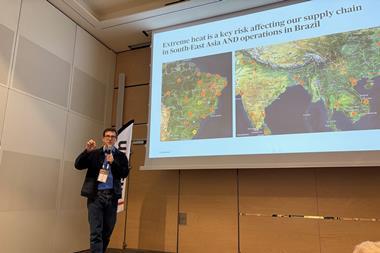Parliament is in trouble because an institution designed to operate under closed politics has collided with the new realities of the information revolution
The poet TS Eliot wrote that April is the cruelest month, but for members of the British ‘Mother of parliaments’, it has been May that they will wish to forget. Thanks to the stream of revelations about misuse of expenses in the Daily Telegraph, most of them have had a brutal introduction to reputational risk and crisis management. And even the tradition-steeped House of Commons would seem to be considering that it is not immune to the need for the kind of corporate governance that most other organisations have been busily implementing for the last decade.
But there is a factor in the scandal which is new. It is not just that the revelations have only been made possible by information technology; it is the fact that the internet has been the medium which has above all others carried the response. From political blogs to local newspaper websites, thousands upon thousands of voters have commented on what they have learned about their representatives. Few have pulled any punches.
Writing in The Times, Daniel Finkelstein summed it up: ‘Parliament is in trouble because an institution designed to operate under closed politics has collided with the new realities of the information revolution.’ He suggested that the political tradition of tightly controlled and disciplined political parties cannot survive into an era when information is so widely and freely available.
And the scale and speed of the information revolution was also a matter for comment in May. The latest version of the Did You Know? Video appeared on YouTube, and has become a favourite with change managers. Its slogan: ‘We live in an exponential age’ sums it up. According to the video, there are 31 billion searches on Google every month; the number of text messages sent daily exceeds the population of the planet, and, if Myspace were a country, it would be the fifth largest in the world. In May, the New Scientist magazine also looked at the growth of the internet. Between 2002 and 2009, the number of UK internet users grew from 29 million to 43.2 million. In Germany, 35.2 million has now become 52.5 million. In China, says the magazine, there are 253 million users.
Risk managers need to think about this. IT risk management is usually considered as being at heart a technical matter of ensuring that an organisation’s systems do not fail, are secure against internal or external attack, and are backed up by contingency plans in the event of things going wrong. But to limit the risk analysis to the architecture or resilience of the system is the equivalent of believing, like the UK parliament, that yesterday’s solutions are good enough for today.
The fact is that the comfortable list of stakeholders so often referred to in corporate responsibility reports – customers, suppliers, shareholders and NGOs – is out of date. A stakeholder is anyone with an internet connection. The real IT risk lies in not recognising this and in failing to grasp the limitless opportunities that the exponential growth of the online world presents.
The sub-text to this, and the unanswered question, is the degree to which the internet will force collaboration between equals into replacing top-down hierarchy as a way of doing business or running an organisation. Discussion of this moved from the ‘wiki’ community into the business schools a couple of years ago, and is still going strong. The Harvard Business School newsletter back in 2007 was already pointing out that the Facebook generation regards e-mail as antiquated. Associate professor Andrew McAffey commented: ‘The distinction I draw is between channel technologies like e-mail and platform technologies that are universally visible and transparent and open to everybody. I think the communication bias of young people today has migrated from channel to platform.’
A Centre for Information Development Management newsletter from the same year warned: ‘ Know that your customers are most likely creating their own information for their own purposes already. Know that many of your customers share information with other customers through emails, listservs, and websites. You cannot stop the process of collaboration. However, you can find ways for it to work to your benefit and to the vitality of your company’s products.’
The corporate world is very gingerly beginning to dip a toe into these waters. For example, Motorola launched a wiki for users of its Moto Q. Why? ‘Because the possible applications for the Q are always expanding, the "ideal user guide" would always grow and change. That can’t happen on paper. With your help, this wiki can capture and share the ever-growing knowledge of the greater community of Q users.’
Motorola’s wiki (search for MotoQwiki) repays a little investigation. Its core remains user-generated updates or comments on the product, but it has expanded far beyond that to include articles about role-playing games and cures for acne. A product user guide turns into a stakeholder community. This is the kind of thing that happens with Web 2.0. But where are the manufacturers of flat-pack furniture or the retailers of consumer electronics with their often-reviled instruction manuals? Nowhere to be found.
The risk manager who thinks creatively now about how his organisation is going to have to change its internal hierachies and customer-facing functions to stay abreast of the evolving internet is going to be several steps ahead. The speed and efficiency of web-based activity drives intolerance of traditional ways of doing things. The hated call centre is probably doomed. ‘Out of stock’ is intolerable in an age of next-day delivery. And the brightest young employees are not going to stay long in an organisation where they are expected to conform to yesterday’s rules.
Postscript
Andrew Leslie is deputy editor of StrategicRISK



















